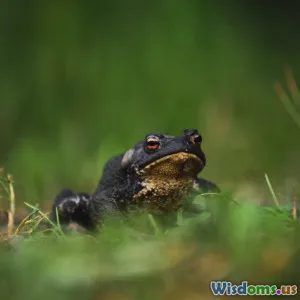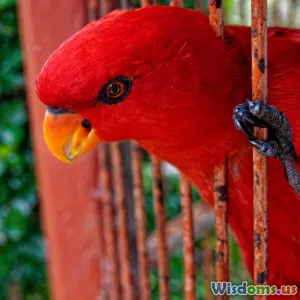Tracking Monarch Butterfly Migration Using Citizen Science Apps
8 min read Discover how citizen science apps track monarch butterfly migration, blending technology and public involvement to unlock migration mysteries. (0 Reviews)Tracking Monarch Butterfly Migration Using Citizen Science Apps
Introduction
Every fall, an extraordinary natural phenomenon unfolds across North America—the migration of the monarch butterfly. These delicate insects embark on a journey spanning thousands of miles, traveling from their summer breeding grounds in the U.S. and Canada to winter sanctuaries in central Mexico and coastal California. But despite decades of study, many aspects of this migration remain a mystery, ranging from precise routes to factors influencing survival.
In recent years, a groundbreaking approach has joined forces with traditional science: citizen science apps. These digital platforms enable everyday nature enthusiasts to record monarch sightings, helping scientists track the butterflies’ vast movement in real time like never before. This fusion of technology, ecology, and public participation is revolutionizing how we understand and protect monarchs.
The Majesty and Mystery of Monarch Migration
Monarch butterflies (Danaus plexippus) perform arguably one of the most remarkable animal migrations on Earth. Unlike birds and mammals that complete their entire life cycle over single migrations, monarchs achieve a multigenerational relay.
- The migration spans roughly 2,000 to 3,000 miles, depending on the population.
- Individuals born in late summer—termed the “super generation”—live 8 months, overwintering and returning to breeding grounds the following spring.
Yet, questions persist about:
- Their detailed migratory pathways.
- How climate and habitat loss affect migration success.
- The timing and triggers of flight patterns.
Understanding these dynamics is vital to protecting monarch populations, which have declined by over 80% in recent decades, largely due to pesticide use, habitat destruction, and climate change.
Citizen Science Apps: Democratizing Data Collection
What Are Citizen Science Apps?
Citizen science apps are smartphone and web-based platforms designed to harvest crowdsourced ecological data from volunteers. For monarch tracking, these apps allow users to submit observations including photographs, GPS coordinates, dates, and butterfly behavior.
Examples of Popular Monarch-Tracking Apps
- iNaturalist: Enables users worldwide to document and identify monarch sightings, contributing to a global biodiversity database.
- Journey North: Focuses on tracking migrations of monarchs and other species through seasonal sighting reports.
- Monarch Watch Mobile: Offers a platform specifically dedicated to monarch conservation and tagging efforts.
These tools empower people of all ages—from students to retirees—to become part of real scientific projects.
Advantages of Using Apps
- Real-Time Spatial Data: Crowdsourced sightings map monarch movements daily, offering dynamic population snapshots at scales impossible for individual researchers.
- Large Sample Sizes: Tens of thousands of users contribute millions of data points, enriching datasets beyond what a limited number of scientists could gather.
- Community Engagement and Education: Participation increases public awareness and stewardship for monarch conservation.
How Tracking Works: From Observation to Insight
Once butterflies are observed and recorded through apps, the data undergoes processing and validation:
- Data Verification: Experts and AI-assisted tools review photos and citizen reports to ensure accurate species identification and data quality.
- Migration Modeling: Researchers analyze temporal and spatial trends to predict migration routes and stopover sites.
- Tagging and Recapture Programs: Some citizen scientists participate in tagging butterflies with tiny, unique stickers that help estimate survival rates and distance traveled.
The integration of these efforts has led to discoveries such as identifying critical nectar plant corridors essential for monarch refueling and detecting previously unknown overwintering clusters.
Real-World Impact of Citizen Science Data
Informing Conservation Strategies
Data derived from citizen science apps guide habitat restoration projects and policy on pesticide regulation. For instance, the identification of key breeding habitats through crowd-sourced data has promoted milkweed planting initiatives in urban and agricultural landscapes.
Climate Change Adaptation
By analyzing delayed or shifted migration patterns, scientists gain insights into how warming temperatures alter monarch behavior, enabling proactive conservation adjustments.
Educational and Social Benefits
Schools adopting app-based projects foster environmental literacy and inspire future biologists. Families tracking monarchs together report increased nature connection and community engagement.
Voices From the Field
Dr. Karen Oberhauser, a leading monarch biologist, remarked, “Citizen science apps have expanded our eyes on the monarch’s journey tremendously. This shared effort bridges gaps no research team could fill alone.”
Elena Ramirez, a citizen scientist in Texas, shared, “Using the Journey North app connected me to a larger purpose. It’s thrilling to know my observations contribute to protecting such an iconic species.”
Getting Involved: How You Can Help
Anyone interested can participate by:
- Downloading Monarch Tracking Apps: Start by logging sightings, photos, and locations.
- Learning Identification Skills: Resources on apps aid proper butterfly or caterpillar recognition.
- Engaging in Tagging Events: Join local monarch tagging initiatives often coordinated by conservation groups.
- Promoting Native Plants: Creating butterfly-friendly gardens supports fuel stops during migration.
Your small field notes contribute vowels to a greater narrative of survival and conservation.
Conclusion
The saga of monarch migration is an awe-inspiring testament to nature’s endurance—a story now unfolding more vividly thanks to citizen science apps. This digital revolution empowers not just researchers but millions of casual observers to weave a collaborative tapestry of knowledge, guiding conservation and deepening our connection to the natural world.
Each logged monarch sighting represents a crucial puzzle piece helping preserve this endangered spectacle. With continued technological innovation and community dedication, the monarch’s migratory legacy can thrive for generations to come.
Harnessing the power of citizen science transforms us from mere observers into active guardians of one of nature’s most enchanting journeys.
Rate the Post
User Reviews
Popular Posts





















